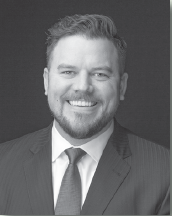
Creating Achievement-Oriented Teams.
When I first started working at Arrowhead Dental Laboratory about 11 years ago, a colleague invited me to go on a backpacking trip with him and three other friends. The first year, we spent a week in the Uintah Mountains in northeastern Utah and climbed Mount Agassiz, a mountain with an elevation of 12,433 feet.
That trip marked the beginning of a yearly tradition. At the time, I thought it would just be a nice getaway. We were a bunch of city slickers, and it seemed like a great way to sneak away from the concrete jungle for a few days.
But I didn’t realize that the trip would be life-changing. Going backpacking helped me push myself beyond what I thought was possible. And when you accomplish something that you previously thought impossible, it’s profoundly empowering.
Although I didn’t necessarily realize it, before that first trip, I was in one of those life ruts. I was in a comfort zone, which wasn’t necessarily a bad place to be, but I wasn’t progressing personally. However, on the hikes I learned quickly that hard work and getting out of your comfort zone leads to personal development and growth. That feeling is what keeps me going back year after year.
Now the backpacking trip is an annual trip and it’s where I find my place of Zen. We hike, build campfires, swim in the lakes, and spend time “off the grid.”

![]()
Each year, our journey gets a little bit longer. The first hike was around 10 miles but now we hike almost 50 or 60 miles. In addition to the Uintah Mountains, we’ve hiked the Wind River Mountains in Wyoming and the Ruby Crest Trail in Nevada. This September, we’re planning to go to Idaho and hike in the Sawtooth Range in the Rocky Mountains.
We’ve climbed some of the tallest mountains in Utah and Idaho—which are in the 12,000- to 13,000-foot range—and now we’re looking at climbing mountains in Colorado, where there are 14,000-foot peaks.
Teamwork
Throughout our trips, the six backpackers have gotten to know each other very well. After 11 years of hiking together, we know each other’s strengths and weaknesses. We don’t see each other too often throughout the year, but we’re able to meet up yearly and work as a team. We have a goal, and are able to achieve that goal because we have cohesiveness. Wouldn’t it be great to come to work every day with that same enthusiasm?
In backpacking, in order to mitigate the amount of weight that each person has to carry, every hiker has certain assignments. One person brings a stove, another person brings a water purification kit, another person brings food supplies, etc. Rather than all of us carrying heavy equipment, it’s a team effort. And we know each other’s roles. If something happens to one of us, another person will pick up the slack.
I like Eastern philosophy, and particularly the Japanese proverb, “A single arrow is easily broken. A quiver of ten is not.” The proverb means that when you work as a team, it’s much more powerful than going at it alone. The principle of teamwork applies whether you’re hiking in the mountains or working in a dental practice.
It takes hard work to achieve cohesion as a team. And in order to be successful, you have to have a leader. Teams need a leader who empowers the team and helps define everyone’s jobs and responsibilities.
In a dental practice, when your patients see teamwork, they want to “camp” with you. They understand that it’s a place of camaraderie and positive outcomes, which will prompt them to return again and again.

The Worst-Case Scenario
A few years ago, we spent a beautiful week near Middle Fork Lake in the Wind River Range in Wyoming. We had about 20 miles to hike out. We hiked all through the day, stopped, ate dinner, and hiked all through the night. We got to within five miles of the trailhead and decided to stop for a brief rest.
When I woke up, I knew something was off. My first thought was that somehow I must have consumed some contaminated water. We decided to hike out even though I wasn’t feeling well. But my illness got progressively worse very quickly. I was feverish and throwing up.
We got within about two miles of our vehicle, and I physically could not continue any longer. One of my buddies ran the remaining two miles to the vehicle, dropped off his pack, returned, took my pack, and hiked an additional two miles with my pack to the car. When he took that burden from me, I was able to complete the hike.
We went to the hospital and learned that I had a perforated appendix. Twenty minutes after we got to the hospital, I was in surgery and my appendix was on its way out. When disaster struck, we were prepared and worked as a team. I learned an important lesson about teamwork that day.
We all have a journey, and we all take different roads. But before setting out, I recommend following a six-step process. These six principles are the same whether you’re hiking a mountain or aiming for higher in-office production goals. First, set a goal. To stay on the right track, identify the goal before you start hiking, or actively moving towards your goal. Second, devise a plan of action and objectives (specific steps) that support the goal. Third, execute the plan. Fourth, identify the results and evaluate them. Fifth (if necessary), adjust the plan of action to reach the goal. Sixth, repeat the steps until you meet your goal.

The Goal
The first step in accomplishing any goal is identifying and defining that goal. In dentistry, your business is to provide patients with solutions to maintain their teeth or restore their teeth to good health. Dr. Dick Barnes has always said that his goal was to “help his patients keep their teeth for a lifetime.” Remember your goal and don’t let it get lost in the myriad of daily responsibilities. The morning huddle is a great time to remind everyone of the goal.
To stay on the trail, so to speak, towards your goal, you need a detailed plan for your team members. Doctors follow a detailed plan when they work clinically on patients, and team members need solid direction, too. Make sure the detailed plan supports the goal.
The first time I went backpacking I showed up with my brother’s backpack from when he was a Boy Scout. The pack was so old that the shoulder straps literally ripped right off when I put it on. I had a goal but not a solid plan.
A Plan of Action
Whether figurative or literal, a journey of any kind requires planning and preparation. You don’t just get together, put on your backpacks, and take off. It takes months of preparation. And you have to plan for contingencies.
For our hiking trips, we meet in the spring to start planning our fall trip. We usually leave a car at one end of the mountain range and drive to the other end of the mountain range to park a second car. Then we spend all week hiking to the second car.
Part of our plan includes preparing for disaster. We have rain gear, snow gear, and light gear if it’s hot. We plan for protection against bears and anything else that we might encounter.
While we are backpacking, we break up the hike into small daily tasks; otherwise it’s easy to get distracted, and as my colleague Hernan Varas explains, “You’re going to end up lollygagging in the river.”
If you lollygag in the river, suddenly the day has passed you by, the sun is going down, and you aren’t where you planned to be. Because of the misuse of time, you have to start hiking the next day at 6 a.m. instead of 8 a.m.
I see similar things happening in some dental practices. An insurance claim call can take half the morning and suddenly your team members realize that they didn’t make any of their other important calls for the day.
Dr. Barnes has said, “You work backwards to have goals.” That means the best way to reach a production goal is to break it down into smaller pieces—an annual production goal, a monthly production goal, a weekly production goal, daily production goals, and even hourly production goals.
Execute the Plan
To schedule your production goals on a calendar, start by assessing what you have in the near future. Look at the entire year, and then start by scheduling out how many days you are not going to work. Take out all the weekends, all the holidays, and all the vacation days. Then figure out how many days you have to work to break even—to turn on the lights in the morning, cool the building down, heat it up during the winter, and pay your entire team—including the dentist. An accurate calendar is a good start.
Keep in mind that every month is going to be different. Some months are going to have more work days than you think and other months will probably have fewer work days. But it doesn’t work to have just a “rough estimate” as a goal. If the goal is defined and solid, then it becomes actionable.
To achieve a higher production goal, look at the business in your recall that can be converted into treatment. Make sure you follow up on recall patients to add them to your daily production goals. Your plan of action might be to call everybody that you haven’t contacted for the last six months.
If you make goal setting a negative thing—suggesting punishment for those who don’t make the goal—team members may feel pressured, which can cause it to backfire.
Instead, offer a positive reward or praise for those who reach the goal. Often a simple “thank you” from the doctor is enough to motivate team members to the next level. Positive feedback is usually a powerful motivator!
Objectives should always be defined, but you shouldn’t be too rigid about them. Dr. Barnes says that it’s good to be “firm in principle, flexible in procedure.”
Try to be as transparent as possible about the goals for your team members. Using actual numbers, let team members know what their goals are and when they hit the mark. When your goals are vague, you’ll get vague results. Dr. Barnes says, “Focus on one day, and that’s today. At the end of today will be tomorrow.”
Identify and Evaluate Results
The next step involves identifying and evaluating the results of your plan of action. You will notice these results immediately because they are reactions—what happened due to your actions. If, for example, patients didn’t show up for their appointments and you therefore did not meet your goals, you can find out why by looking at the sequences of events that led up to the failure. Sometimes evaluation is positive—looking at what contributed to an extraordinary day.
The evaluation step is simply taking time to look at what the results were. A good time to evaluate the day is during the morning huddle. During the huddle, you and your team can discuss the previous day’s accomplishments—where did you succeed and where did you fail? What do you need to work on? Where could you improve?

![]()
Making Adjustments
If you aren’t seeing the results you want, you have to adjust the plan of action. As Dr. Jim Downs says, “You have to inspect what you expect.” The adjustment phase is important so you don’t keep failing to reach the goal.
Prior to working as a practice development rep, I was the assistant manager in the metal department at Arrowhead. Every day, we would get numbers indicating how many cases we had to remake. At one point, we decided to significantly get the remake numbers down. I started brainstorming with colleagues on how to reduce those numbers.
One thing we tried was to post everybody’s remakes on a bulletin board for everybody in the department to see. Technicians hated that other people in the lab could see their mistakes—however unintended they might be. It was embarrassing and morale dropped quickly.
I thought there had to be a better way. Many technicians were producing 100 perfect crowns and only one with a tiny problem. But we were focusing on the one with a minor mistake. So I created a chart that showed the percentage of perfect crowns for the team.
Everybody could see the percentage of perfect crowns, which started at 96 percent. It gradually moved up as everyone started achieving 96, 97, and then 98 percent. Morale was much better when the team was praised for having such a high percentage of perfect crowns.
Once again, if you have a goal, share the goal with the entire team and let team members “own” their task. Then it becomes everyone’s goal.
Repeat
When you get to the evaluation step and everything is going great, you no longer need to make adjustments. You can simply repeat the actions that led to the positive outcome. To maintain motivation and enthusiasm, offer rewards and incentives for your team members.
When we’re hiking, the reward at the end of the hike is burgers and beer at a nearby restaurant. And believe me, after eating dehydrated food on the trail for a week, a good meal is a strong motivator. You’re going to have tough days, but the challenge for a leader is to keep cheering the team on. A positive mental attitude is a powerful tool.
It’s important to find ways to keep your team going. On the trail, there’s always one person who cheers the rest of us on. Along the way, one hiker or another is usually tired or depressed, but inevitably someone picks up the mantle of cheerleader to keep everyone motivated. The motivation is essential to making it toward to the goal. And believe me, the view from the summit is beautiful. Whatever your “summit” may be, you can make it.










